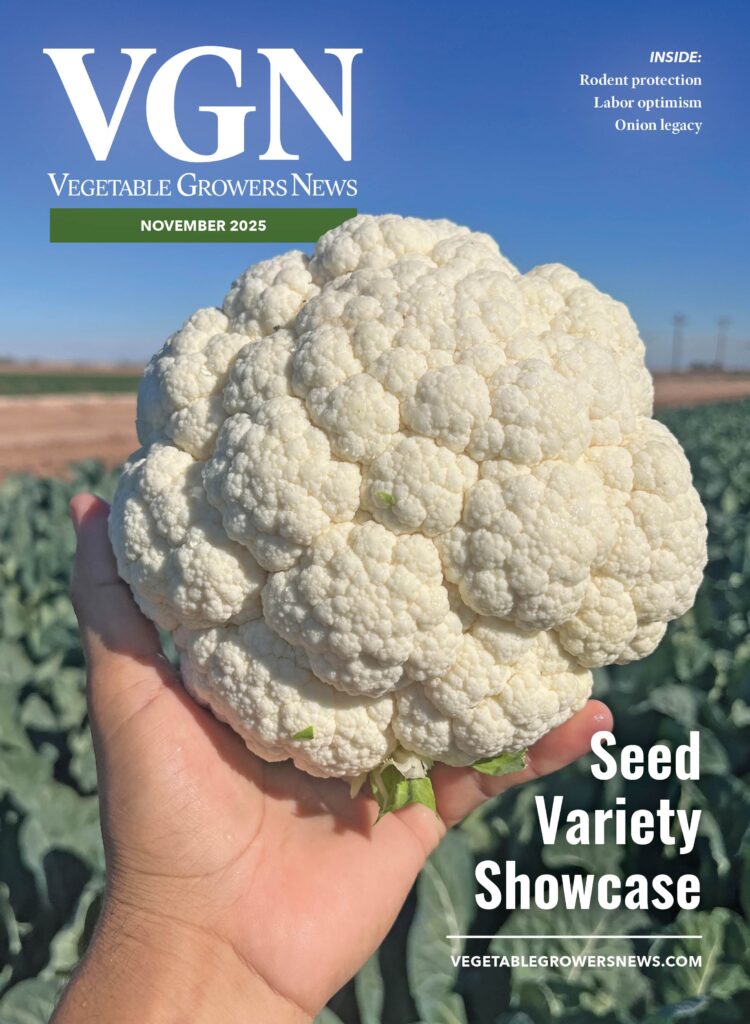
Jul 28, 2025Exploring the possibility of growing scotch bonnet peppers in the Midwest
During a family vacation in Jamaica, we fell in love with the food, spices and condiments that go with the cuisine. Back in the mainland U.S., I said to my wife that Scotch Bonnet peppers have a high potential for crop diversification on small- and medium-sized farms in the Midwest. And so, the journey in 2023 started.
Where are Scotch Bonnet peppers from?
This tasty and fiery pepper originates from the lowland jungles of the western Amazon basin, which is now part of Brazil. The Taino and later the Caribs, both Arawakan subgroups that originated in the Orinoco River Valley (present-day Venezuela), were the original exporters of Scotch Bonnets, and they introduced them to the Caribbean.
Photo at top: Image 1. Variety of Scotch Bonnet fruit. Photo by Petrus Langenhoven.
How spicy is it?
The Scotch Bonnet pepper (Capsicum chinense) is a popular ingredient throughout the Caribbean islands and plays a significant role in the growing hot sauce industry. These peppers typically measure between 100,000 and 350,000 Scoville Heat Units (SHU). They are known for their unique aromatic flavor and high pungency. The spice of Scotch Bonnet peppers hits the tongue immediately and lingers on the palate. In addition to their intense heat, these peppers are an excellent source of vitamins A and C, as well as magnesium, flavonoids, folate and various phytochemicals.

Is there a market for Scotch Bonnets?
The hot sauce industry has shown steady growth in the U.S. According to IBISWorld’s 2024 industry report, U.S. hot sauce production reached $2.7 billion in revenue, with an expected compound annual growth rate of 2.1% to $3 billion through 2029. The industry faces several challenges, including rising competition from foreign manufacturers and price pressures affecting profit margins, which currently average 3.6%.
The industry has seen significant transformation driven by changing consumer preferences, particularly among younger generations and growing immigrant populations who have expanded the domestic spice palette. The sector remains highly competitive, with manufacturers increasingly focusing on product innovation and brand differentiation to maintain market position.

The opportunity
Production in the Caribbean faces challenges from extreme weather events such as flooding as well as high insect and disease pressure. Additionally, there is limited availability of highly productive land. However, there is a growing demand for high-quality peppers, which we can cultivate locally, in the U.S. and globally. Various products can be made from Scotch Bonnet peppers, including seasoning, pickled peppers, dried pepper mash, dehydrated peppers, ground or crushed pepper, pepper paste and pepper sauce. In the Midwest, we have an abundance of fertile land and access to water, making it an ideal location for such production.
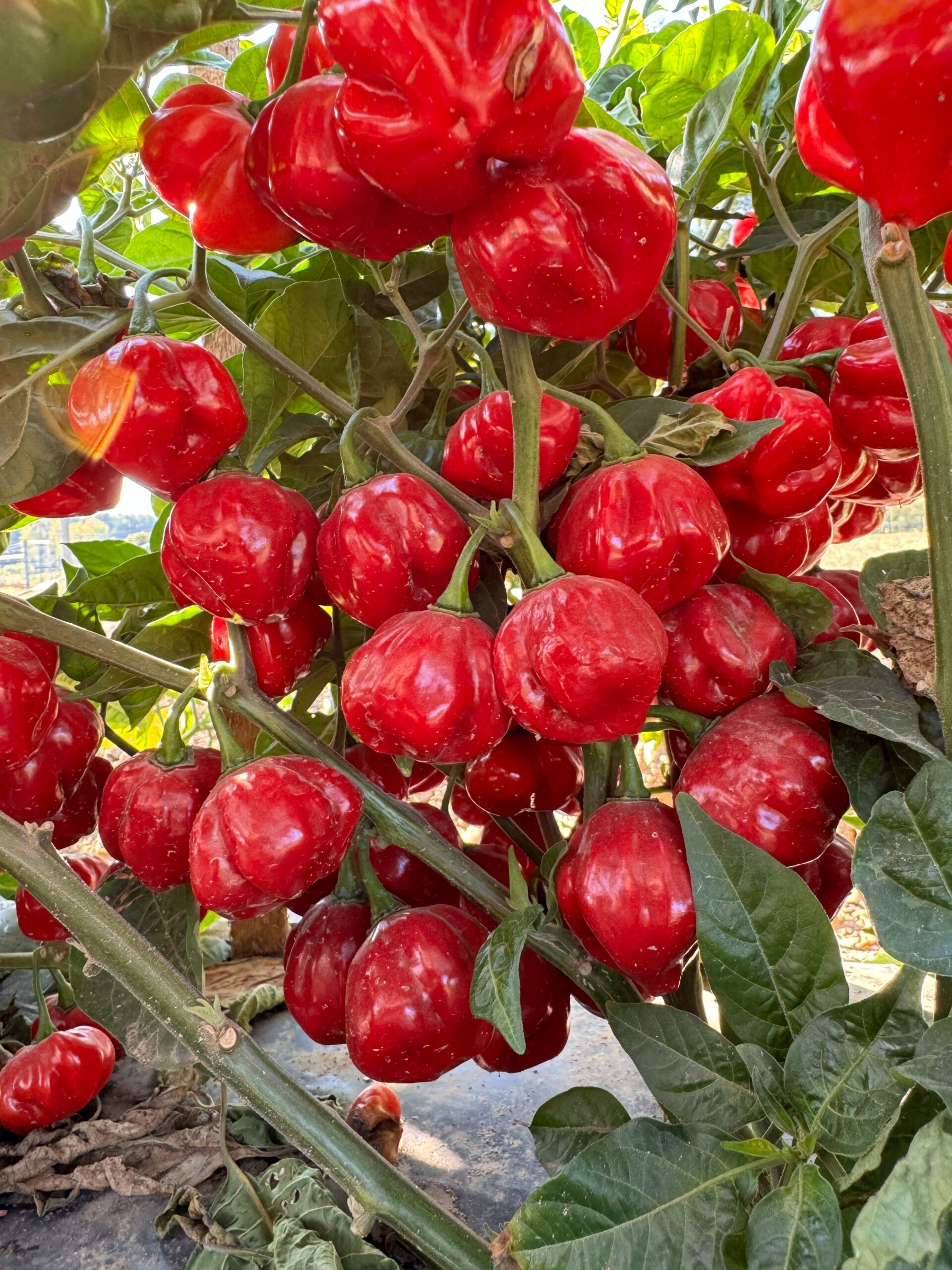
Growing requirements
Before starting Scotch Bonnet pepper production, Midwest farmers should understand the specific requirements of the crop. These peppers thrive in well-drained, fertile loam or clay loam soil with a pH range of 6.0 to 7.5. Although these soil conditions are common in many Midwest regions, the main challenge is the short growing season. Soil temperatures must be at least 65° F for transplanting, and plants perform best when temperatures range from 70° F to 95° F during the growing season. Depending on the variety, the days to maturity can vary between 80 and 120 days. If temperatures remain favorable, the plants will continue to flower and set fruit.

Image 5. BPH-3 (Chocolate Scotch Bonnet) produced the hottest peppers. Photo courtesy Langenhoven.
Preliminary research
In 2024, my team at Purdue University conducted a trial on various Scotch Bonnet pepper varieties at the Meigs Horticulture facility near Lafayette, Indiana. The objective was to document the production potential, SHUs and color differences among the varieties.
We selected 18 different varieties (Table 1) and seeded them in the greenhouse on April 11. The seedlings were then transplanted into raised beds on May 14, with plants spaced 1.5 feet apart. The raised beds were positioned 6.5 feet apart, resulting in a total plant population of 4,468 plants per acre.
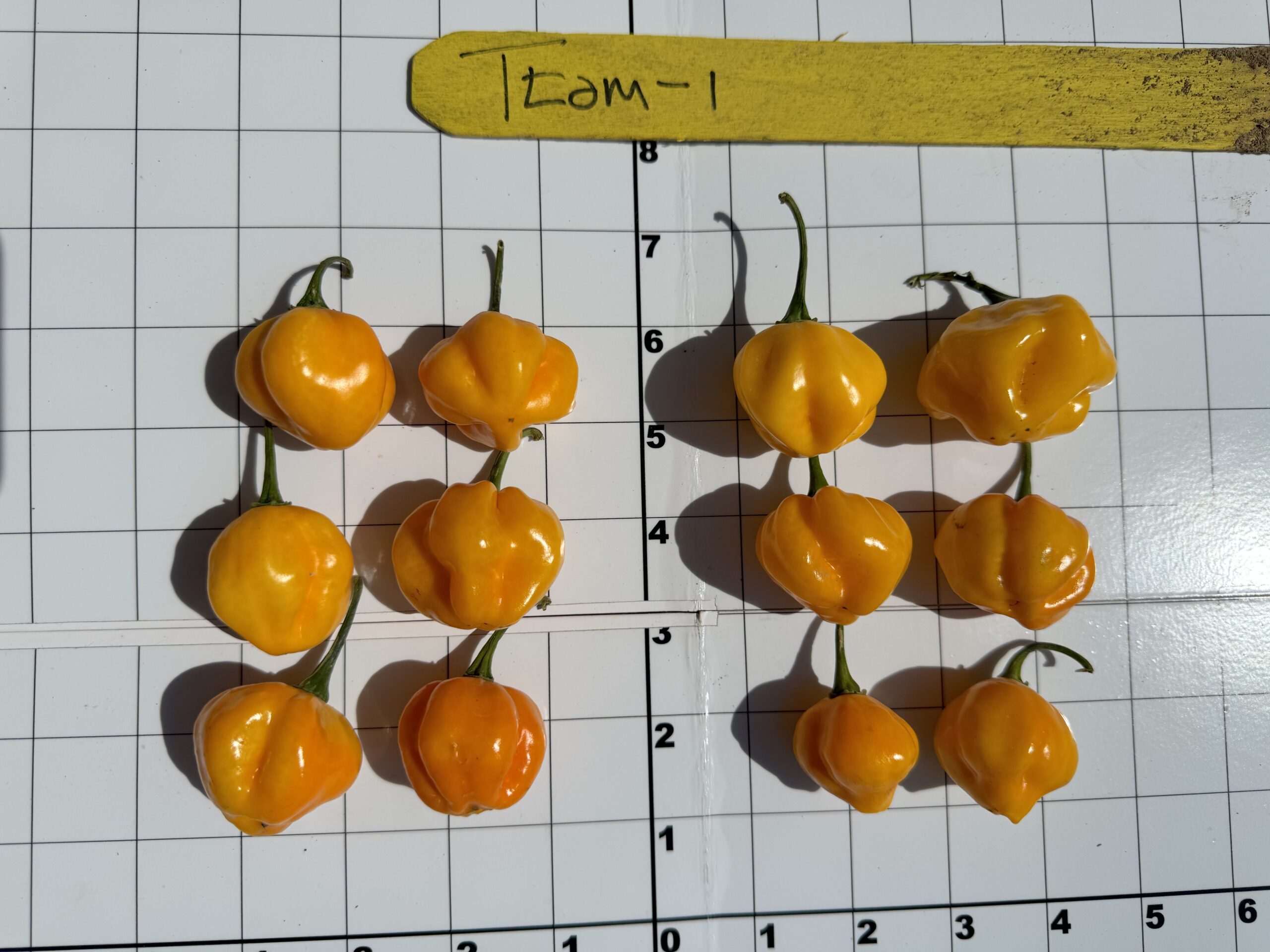
Initially, the plants showed limited growth during the first four weeks after transplanting (Image 1). Scotch Bonnet peppers thrive in warm conditions and grow best at temperatures between 70° F and 95° F degrees Fahrenheit. These optimal temperatures were not achieved until the fifth week post-transplanting, leading me to advise against early planting (Images 2 and 3).
Throughout the growing season, we observed very few diseases, and insect pressure remained low. Our goal included determining how long we could delay the first harvest date. This consideration is important due to the high cost of labor and to understand how long the fruit can remain on the plant before quality begins to decline.
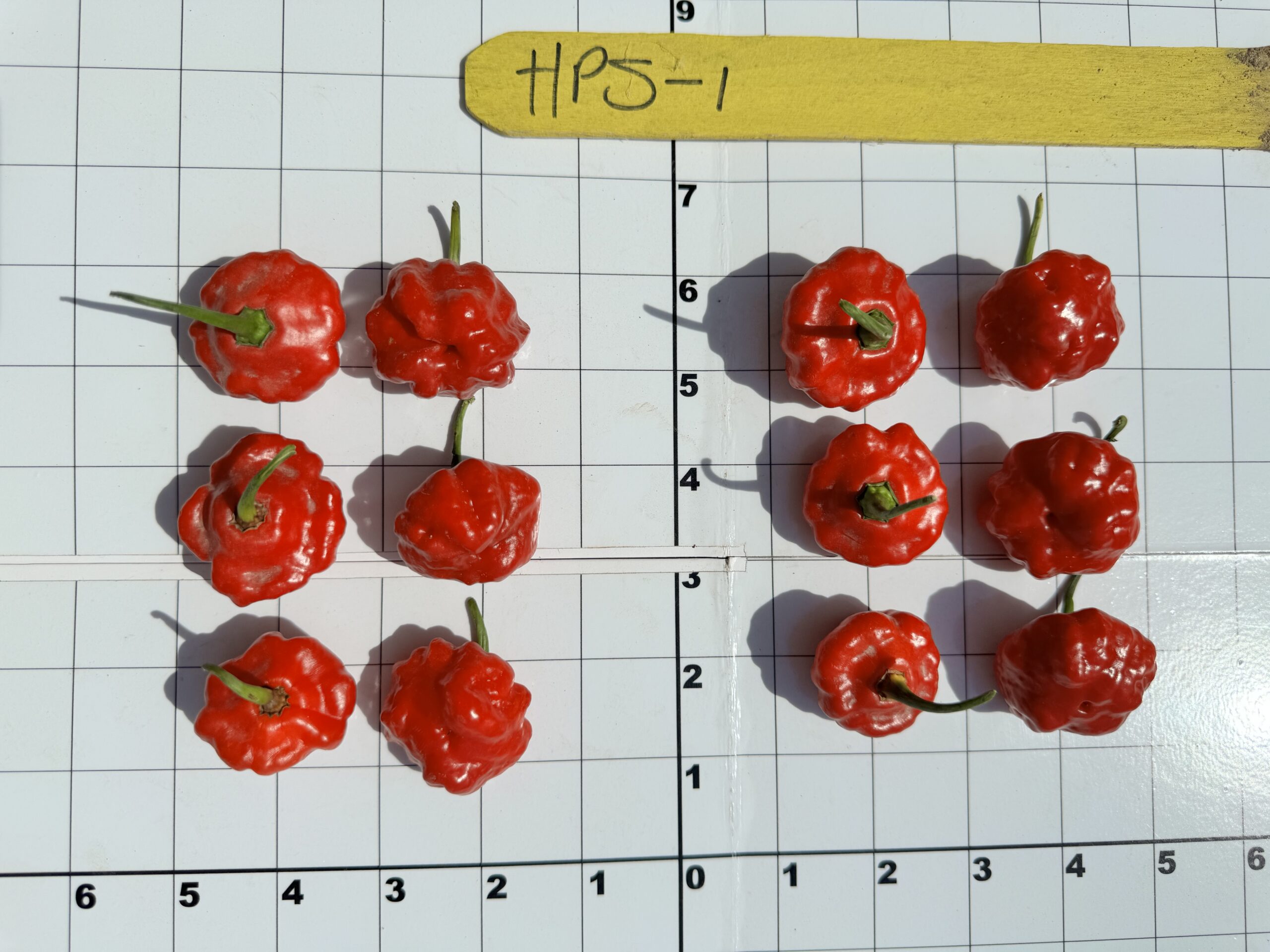
The months of August and September were particularly dry, which contributed to keeping fruit disease-free. Harvesting began on September 12, 119 days after transplanting, and concluded on October 3 (Image 4).
Table 1: List of Scotch Bonnet varieties
| Varieties | Color | Seed Company | Code |
| Scotch Bonnet Chocolate | Chocolate | Bohica Pepper Hut | BPH-3 |
| Chocolate Scotch Bonnet Pepper | Chocolate | Sistah Seeds | Sis-1 |
| Orange Scotch Bonnet | Orange | Totally Tomato | Ttom-1 |
| Orange Scotch Bonnet Hot Pepper Seeds | Orange | Pepper Joe’s | PeppJ-2 |
| Scotch Bonnet Peppers [Orange] | Orange | Florida Seed & Garden | FLS-3 |
| Scotch Bonnet Freeport Orange | Orange | Bohica Pepper Hut | BPH-4 |
| Orange Scotch Bonnet Pepper | Orange | Ohio Heirloom Seeds | Heir-1 |
| Sweet Bonnet Pepper | Red | HPS Seeds | HPS-1 |
| Red Scotch Bonnet Hot Pepper Seeds | Red | Pepper Joe’s | PeppJ-3 |
| Scotch Bonnet Red Pepper Seeds | Red | Seeds n Such | SnS-1 |
| Scotch Bonnet Peppers [Red] | Red | Florida Seed & Garden | FLS-2 |
| Scotch Bonnet MOA Red | Red | Bohica Pepper Hut | BPH-2 |
| Red Mushroom | Red | Territorial seeds | Ter-1 |
| Yellow Scotch Bonnet Pepper Seeds | Yellow | Pepper Joe’s | PeppJ-1 |
| Jamaican Scotch Bonnet | Yellow | Rare Seeds | Rare-1 |
| Scotch Bonnet Peppers [Yellow] | Yellow | Florida Seed & Garden | FLS-1 |
| MOA Scotch Bonnet – yellow | Yellow | Bohica Pepper Hut | BPH-1 |
| Hot Pepper Seeds – Jamaican Hot Yellow | Yellow | Eden Brothers | Eden-1 |
Findings
Scotch Bonnet fruit shape and size varied between varieties. Varieties produced between 14,000 and 24,000 lb/acre (Table 2; Images 4-6). The weight of individual fruit ranged between 0.29 and 0.60 ounces. The Scoville heat units varied significantly, ranging from 5,000 and 500,000, which contradicts the commonly reported range of 100,000 to 350,000 for Scotch Bonnet peppers. Additionally, the pepper fruit was freeze-dried and powdered, resulting in a range of colorful powders (Images 7 and 8).
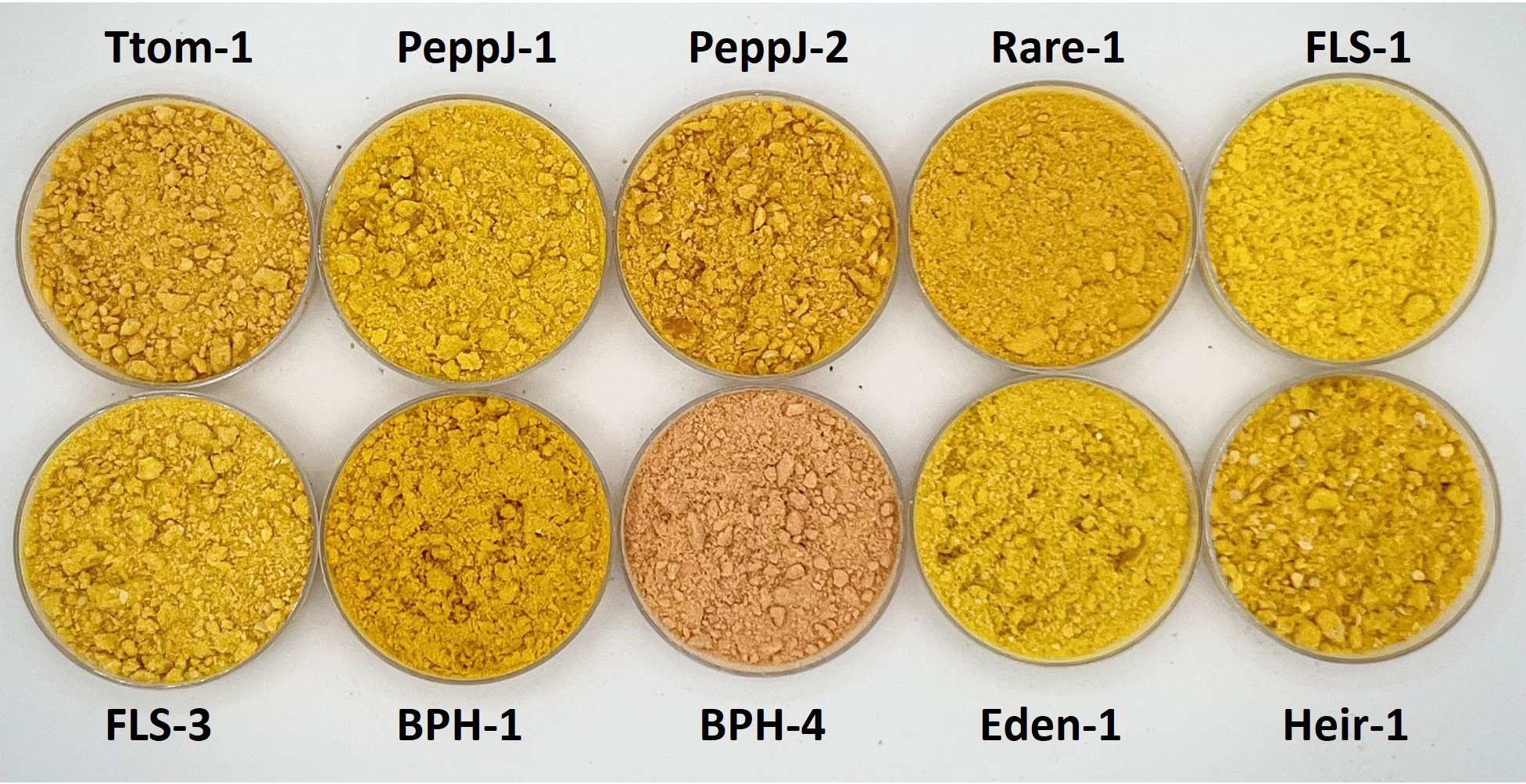
Looking ahead
The results indicate that Scotch Bonnets are likely to thrive in the Midwest. However, there are still many questions that need to be addressed. Although growing Scotch Bonnets in this region presents certain challenges, the expanding market makes it an appealing option for diversification. Achieving success in this endeavor requires careful attention to climatic conditions, harvesting practices, post-harvest handling, market development and quality control.
For Midwest farmers considering the production of Scotch Bonnets, several promising market strategies include direct contracts with hot sauce manufacturers, development of local markets and cooperative marketing efforts.

Growing Scotch Bonnet peppers
Farmers interested in producing Scotch Bonnet peppers should:
- Consult with local Extension services for guidance on growing techniques.
- Connect with potential buyers before starting production.
- Visit successful pepper operations in similar climate zones to gain insights.
- Start with a small pilot program to test systems and markets.
- Research the cost of setting up or renting an FDA-approved kitchen.
- Build relationships with hot sauce manufacturers or ethnic grocery stores.
— Petrus Langenhoven is a Purdue University clinical assistant professor and vegetable Extension specialist. His work focuses on advancing sustainable solutions for small- and medium-sized vegetable farms with new technologies and sustainable practices.















